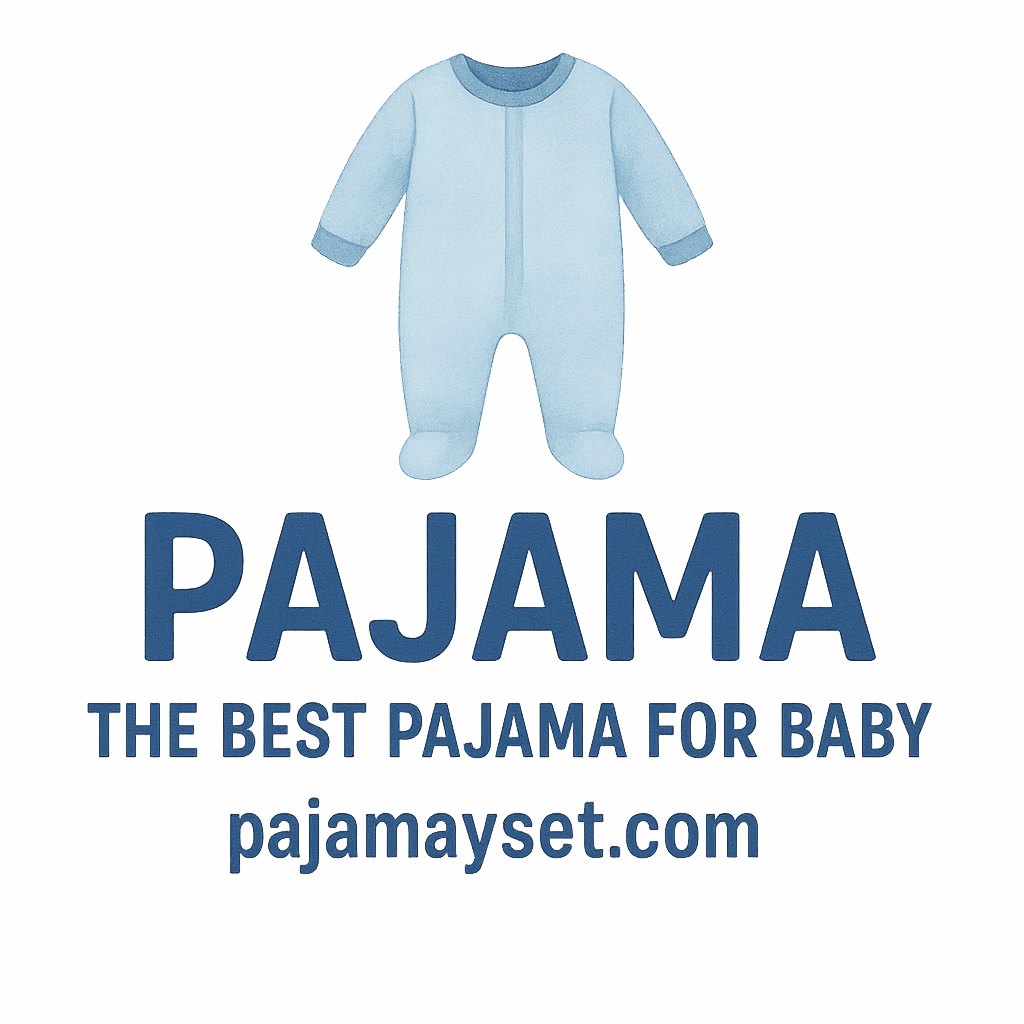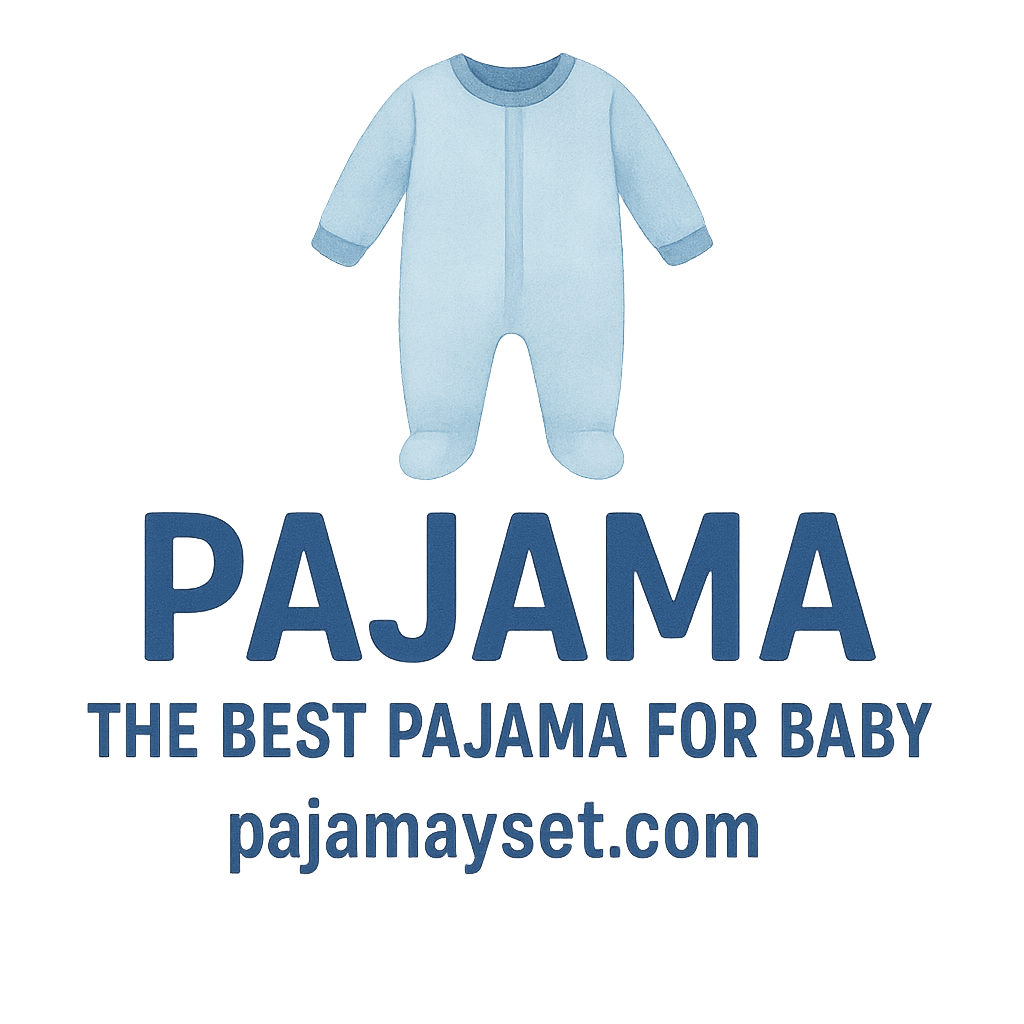Introduction
Dressing your baby in cozy, soft pajamas is one of the joys of parenthood. However, as every parent knows, safety is paramount when it comes to your baby’s clothing. Pajamas that are cute and comfortable can sometimes harbor hidden dangers, especially when it comes to choking hazards. Whether you’re preparing your little one for a good night’s sleep or a cozy afternoon nap, it’s crucial to ensure that the pajamas you choose are free from hazards that could pose a risk to your baby’s safety.
In this article, we’ll cover 7 pajama choking hazards to avoid when dressing babies, focusing on common yet often overlooked risks. We’ll explore practical tips for choosing safe pajamas and how to make sure your baby’s nighttime wardrobe is as safe as it is adorable.
1. Small Buttons: A Hidden Danger
Why Buttons Are Risky for Babies
When you think of pajamas, buttons are often a cute and functional feature. They’re convenient for adjusting sizes or adding a touch of charm to the outfit. However, small buttons can pose a serious choking hazard for babies. Infants are naturally curious, and as they explore the world around them, they often put things in their mouths. Tiny buttons can easily detach from the fabric, creating a choking risk.
Even if a button is securely sewn onto a pajama, the constant movement and wear can cause it to loosen over time. Babies who are teething or exploring their hands and mouths are particularly vulnerable to this kind of risk.
How to Choose Safe Pajamas Without Buttons
To avoid the potential choking hazard of buttons, look for pajamas made with alternatives like zippers, snaps, or simple pull-on designs. Many modern baby pajamas come without any buttons at all, opting for safer fastening methods that don’t pose a risk.
Check out pajama materials that are designed for safety and comfort, such as those made from soft, breathable fabrics with secure fastenings. Visit Pajama Set for more information on safe fabric options.
2. Zippers: Are They Really Safe for Babies?
Understanding the Risks of Zippers
Zippers, while often considered a safer alternative to buttons, still come with potential risks for babies. The main issue is that the zipper pull can sometimes come loose, creating a small object that babies can easily access and put in their mouths. Additionally, the metal teeth of zippers could pose a risk if they are not properly covered.
Safety Features to Look for in Pajamas with Zippers
When shopping for pajamas with zippers, look for those that feature safety covers or soft flaps to protect the baby’s skin and reduce the risk of the zipper pull coming loose. Make sure the zipper is securely fastened and consider designs where the zipper is hidden underneath a flap of fabric, reducing the chance of the baby fiddling with it.
For more safety tips, check out Pajama Set’s safety guidelines.
3. Drawstrings: A Dangerous Feature in Baby Pajamas
Why Drawstrings Pose a Choking Risk
While drawstrings are commonly used in various types of clothing, they pose a serious risk to babies. Babies can easily get entangled in drawstrings, which may lead to strangulation or choking. Furthermore, drawstrings that come loose can be a choking hazard if the baby manages to pull them into their mouth.
Drawstring-Free Pajama Options
To eliminate this risk, avoid pajamas with any drawstrings or cords. Many baby pajama sets now feature elastic waistbands or other safe fastening methods to ensure that your baby stays comfortable without the dangers of drawstrings. These alternatives keep babies safe while offering a snug fit.
Learn more about how to choose safe baby clothing without dangerous drawstrings at Pajama Set’s style and design page.

4. Loose Pajama Fabric: A Risk of Entanglement
The Dangers of Overly Loose Pajamas
Loose pajama fabric is another potential hazard for babies. Overly baggy pajamas can get caught in cribs or other furniture, creating a strangulation risk. Additionally, loose fabric can be a choking hazard if it comes loose and the baby can pull it over their head or face.
Tips for Selecting Well-Fitting Pajamas for Babies
Choose pajamas that fit snugly but comfortably, ensuring they are not too tight or too loose. Pajamas made from stretchy materials are a great option because they allow for movement while maintaining a secure fit. Always check that the pajama cuffs and waistbands are not too loose, as this can create unnecessary risk.
For more tips on choosing the right pajama fit, visit Pajama Set’s expert recommendations.
5. Small Decoration Pieces: The Hidden Hazard
Types of Decorations That Can Be a Choking Hazard
Baby pajamas often come with cute embellishments like appliqués, embroidery, or beads. While these details are adorable, they can become detached and pose a choking hazard. Babies are naturally curious and may try to pull or nibble on these decorations, especially as they are exploring their world.
How to Avoid Pajamas with Small Decoration Pieces
When shopping for baby pajamas, look for designs that have minimal decorations or use embroidery instead of loose beads or other small accessories. Always check the quality of the stitching to ensure that no pieces are at risk of coming loose.
For more details on safe pajama designs, visit Pajama Set’s design page.
6. Improper Fit: Pajamas That Are Too Tight or Too Loose
The Importance of Pajama Fit for Safety
The fit of your baby’s pajamas plays a critical role in safety. Pajamas that are too tight can restrict circulation or cause discomfort, while those that are too loose can create entanglement hazards. Both can pose a risk to your baby’s well-being.
How to Ensure Pajamas Fit Properly and Safely
Choose pajamas that are designed to fit snugly but comfortably. Avoid overly tight fits, especially around the neck and legs, which could cause discomfort or restrict movement. Likewise, ensure that the pajamas are not so loose that they become a choking hazard.
Check out Pajama Set’s buying reviews for helpful feedback on the best-fitting pajamas.
7. Poor Quality Materials: The Role of Fabric in Safety
The Safety Risks of Poor-Quality Pajama Fabrics
Pajamas made from low-quality materials can be uncomfortable and unsafe. Fabrics that are not breathable can cause your baby to overheat, while rough or scratchy materials can irritate sensitive skin. Worse still, poorly made pajamas may have loose threads or poorly attached fastenings that pose choking risks.
Choosing Baby Pajamas Made from Safe, Breathable Fabrics
Always opt for pajamas made from high-quality, breathable fabrics like cotton or bamboo. These materials are gentle on your baby’s skin and provide comfort throughout the night. Look for pajamas that meet safety standards and are free from harmful chemicals.
For more tips on choosing the best fabrics for your baby, visit Pajama Set’s fabric guide.
Conclusion
Ensuring your baby’s safety while dressing them for sleep is vital. Pajamas are essential for keeping your little one comfortable, but they should never compromise safety. By avoiding small buttons, zippers, drawstrings, and loose fabric, and opting for high-quality, breathable materials, you can help prevent potential choking hazards. Always choose pajamas that fit properly and are made with the highest safety standards in mind.
Remember, your baby’s comfort and safety are always worth the extra attention to detail. Happy shopping!
7 Frequently Asked Questions
1. Are there any other potential choking hazards in baby pajamas?
Yes, some pajamas may have tags or labels that could pose a choking hazard if they are not securely attached. Always check for these before dressing your baby.
2. How can I ensure the pajamas I buy are safe for my baby?
Look for pajamas made from high-quality materials with secure fastenings. Avoid small buttons, drawstrings, or any loose parts that could detach.
3. What are the best materials for baby pajamas?
Soft, breathable fabrics like cotton and bamboo are excellent choices for baby pajamas. They help keep your baby comfortable and safe throughout the night.
4. Are pajamas with buttons completely unsafe for babies?
Not necessarily, but buttons can be a choking hazard if they become loose or detach. Choose alternatives like zippers or snaps for added safety.
5. How can I check if the pajamas fit my baby correctly?
Ensure the pajamas are snug but not tight, with no loose areas that could pose a risk. They should allow your baby to move comfortably without being too baggy or too tight.
6. What are some alternatives to pajama drawstrings?
Look for pajamas with elastic waistbands or those that feature secure closures like snaps or zippers.
7. Where can I find recommended safe baby pajamas?
You can find a wide range of safe, high-quality pajamas for babies at Pajama Set, where expert recommendations and reviews are available.


